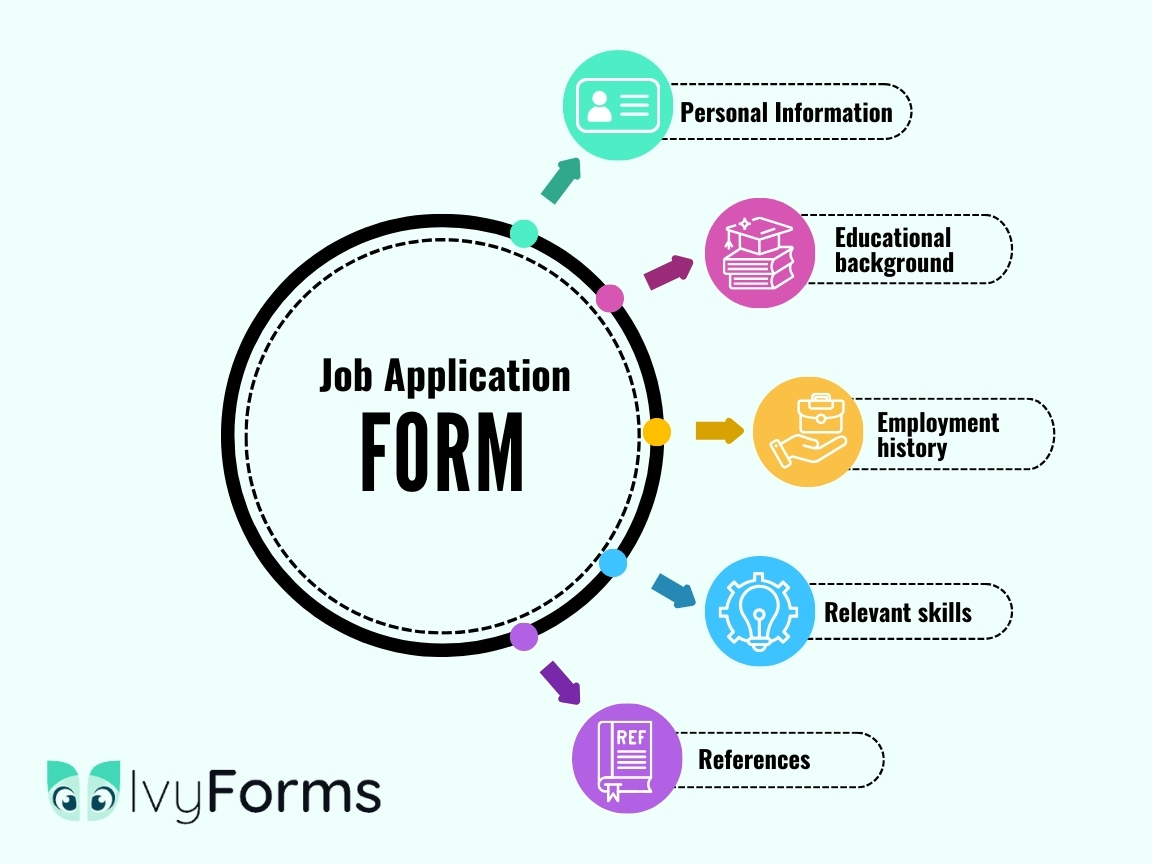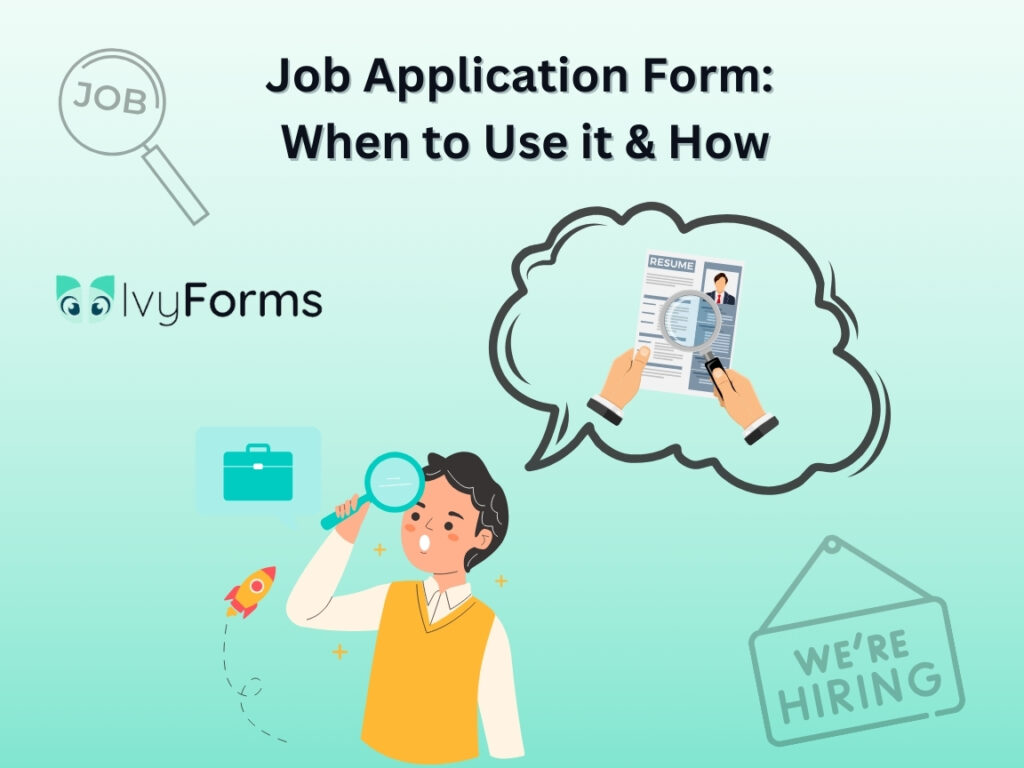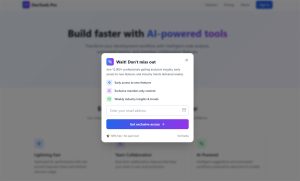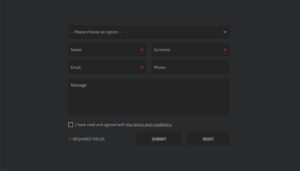Most visitors leave your website without taking action. Industry data puts this number around 96-97%. Exit-intent forms capture a portion of that departing traffic by displaying targeted messages at the…
Table of Contents
In the competitive job market, finding the right candidate can be a challenging endeavor for employers regardless of their experience. One often overlooked tool at your disposal is a job application form. However, knowing when to use it and how; can also be difficult without proper guidance.
That’s why we are here to help you navigate the world of job application forms seamlessly. We will help you understand the basics while also providing valuable insights. Together with some practical tips, we will ensure you get the complete picture of how to effectively utilize these forms in your hiring process.
What Is a Job Application Form?
A job application form is a type of form that potential candidates fill out to provide essential information about themselves when applying for a position. Unlike CVs, resumes, and similar documents, which all vary significantly in format and content, job application forms ensure that all candidates provide the same type of information.
This standardization makes it easier for employers to evaluate applicants fairly and consistently.
What Does a Job Application Form Include?

Typically, a job application form includes the following sections:
- Personal information. This section gathers basic details such as the candidate’s name, age, contact information, and address.
- Educational background. Here, applicants provide information about their academic qualifications, including schools attended, degrees earned, and relevant coursework.
- Employment history. In this section, your candidates will be able to outline their previous work experience, detailing job titles, responsibilities, and dates of employment.
- Relevant skills. This part allows candidates to highlight specific skills that are important to the job, such as technical abilities, languages spoken, or other certifications.
- References. In this section, you are leaving the space for your candidates to provide names and contact details for professional referees who can vouch for their qualifications and skills.
Depending on the specific role a candidate is applying for, a job application form can include a section with specific questions tailored to the job or the company’s values. Some additional questions about availability, desired salary, or reasons for leaving the previous position can also help you make better hiring decisions.
Take a look at these job application form templates and examples! They’re great for sparking ideas and getting inspired. Enjoy!
When Should You Use a Job Application Form?
Did you know that over 92% of people never finish their online job application form? And around 60% quit due to the form being too lengthy or complex. These are some hefty numbers, so many employers try to stay away from application forms as far as possible. But that’s also not a good practice.
Although complicated job application forms can drive candidates away, completely avoiding them can lead to missed opportunities for finding the right talent. The key is to strike a balance. Job application forms should be concise yet comprehensive, allowing you to gather essential information without overwhelming applicants.
In general, they can, and moreover should, be used in any hiring process regardless of the position or the industry. It’s less about when job application forms should be used and more about how they should be used so you get the most out of the process.
How to Properly Use a Job Application Form?
In terms of job application forms, implementation is everything. So, in order to maximize their efficacy, here are some key steps to follow:
1. Keep it concise
Strive for clarity, and make sure you only ask what’s relevant for the job. Any additional questions or less important details can be asked later in the interview phase. Look at it this way: fewer questions mean more motivated candidates to answer them and less data for you to read through. However, don’t go to the other extreme and leave all the important information out of the form. The key is to find the perfect balance.
In fact, research done by Appcast shows that the number of questions has an impact on the application rates. In forms that include up to 25 questions, the application rate was 10,60%, while in forms with over 50 questions, the rate was only 5,68%.
2. Tailor questions to the specific role
Once created, the form can be used for a variety of job openings in your company. However, this doesn’t mean just copy and paste. Be sure to customize your application form to reflect the specific requirements of the position you’re hiring for.
Include targeted questions that address the skills and experiences relevant to the role while also considering some other personal aspects.

3. Make your form user-friendly
The form should be easy to navigate with clear instructions on what to write and where. This goes for both in-person and online application forms. Use clear language, logical formatting, and an intuitive flow to guide candidates through the process. If you need any additional help or tips on the design, here is our guide on common mistakes to avoid when designing your WordPress form.
Lastly, over 70% of people in 2022 used their mobile devices to fill out an application, so be sure your form is properly optimized.
4. Review them regularly
The great thing about these forms is that they can be used over and over with just some minor tweaks. But you should still take some time to assess their effectiveness and see how they can be improved. The feedback from those who filled them out can be a great source of information, so start by asking those who secured the job successfully. Their experiences can highlight aspects of the form that worked well and areas that may need adjustment. In fact, a report done by Talentegy reveals that 69% of job seekers are likely to provide feedback on the application process, so don’t miss out on this info.
An ongoing evaluation will help you refine your approach and ensure that your application forms remain effective and aligned with your organization’s evolving needs.
5. Integrate them with other assessment methods
While job application forms are valuable, they shouldn’t be the sole method of evaluation. To gain a better understanding of each candidate’s abilities, complement them with other assessment methods. Consider incorporating interviews, skill assessments, or portfolio overviews depending on the position you are hiring for.
This multi-method approach will help you get a full picture of your candidates and their abilities, resulting in better hiring decisions.
Conclusion
Job recruitment is a complex task to navigate, but utilizing job application forms can simplify the process significantly. These forms provide a structured approach to collecting essential information, helping you evaluate candidates more efficiently and effectively. While there are some considerations to keep in mind, the value they bring to your hiring process is clear.
By keeping your forms concise, tailoring questions to specific roles, and integrating them with other assessment methods, you can create a comprehensive recruitment strategy that leads to success every time.
Ultimately, job application forms are a valuable tool in your hiring arsenal, enabling you to find the right talent that aligns with your organization’s goals and culture.





